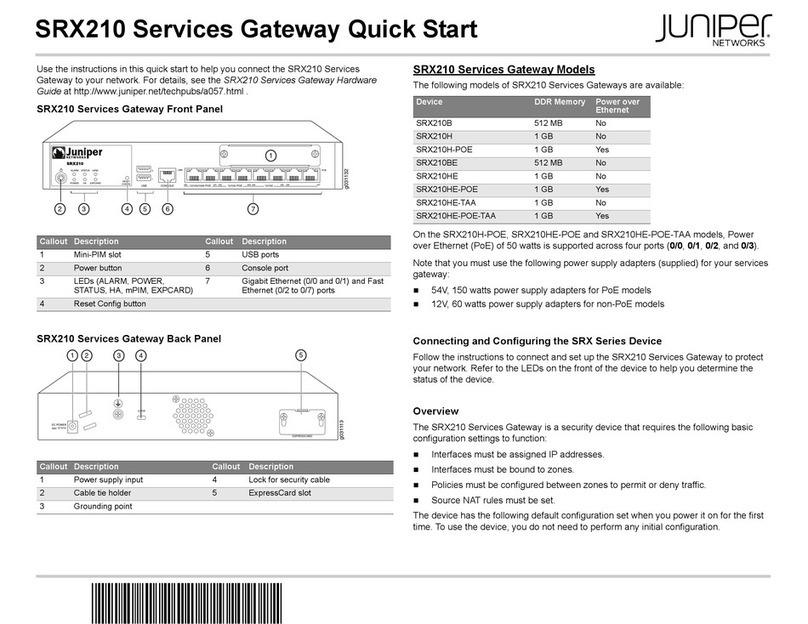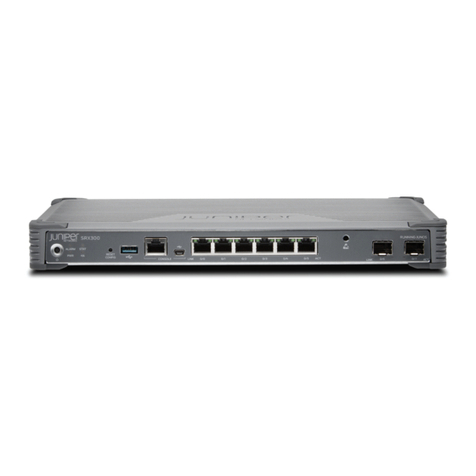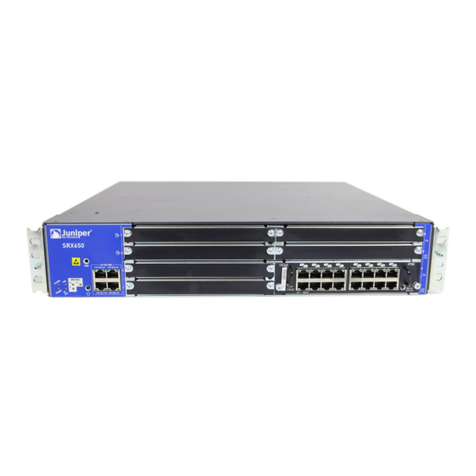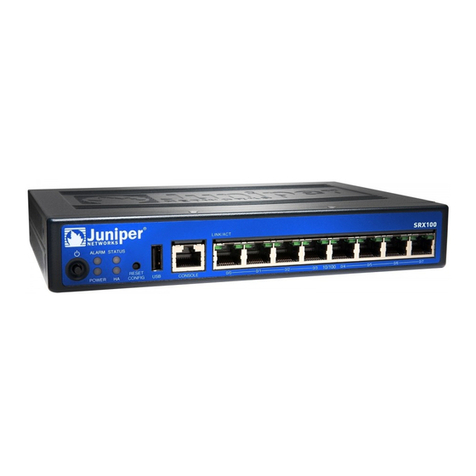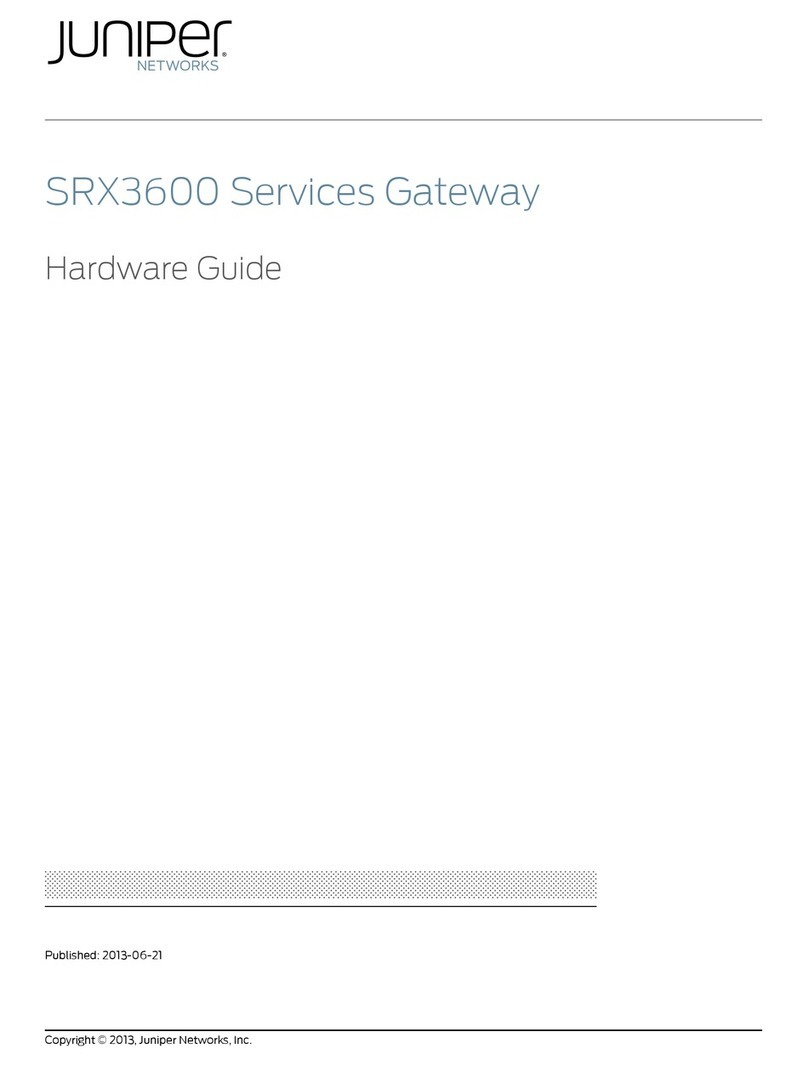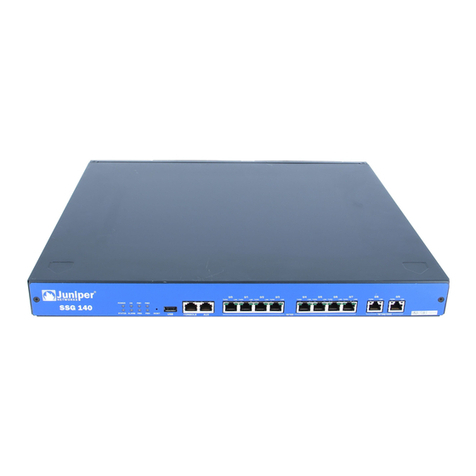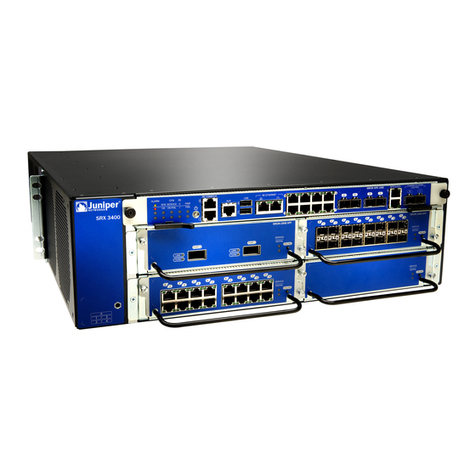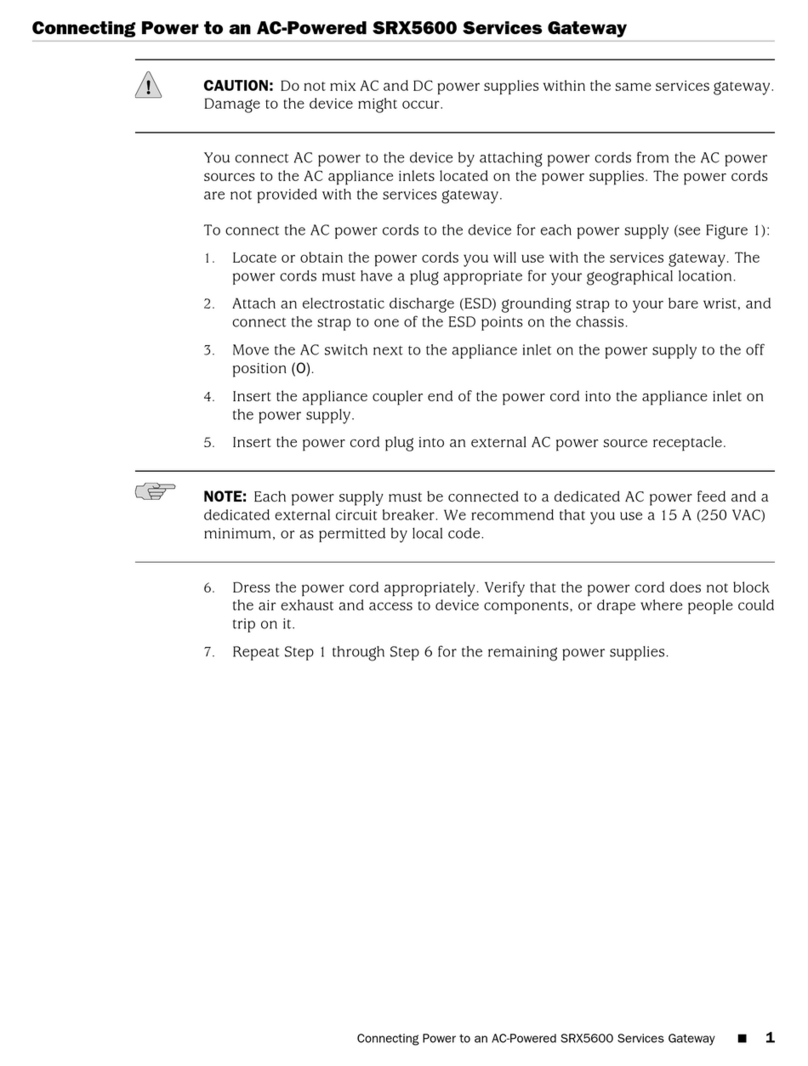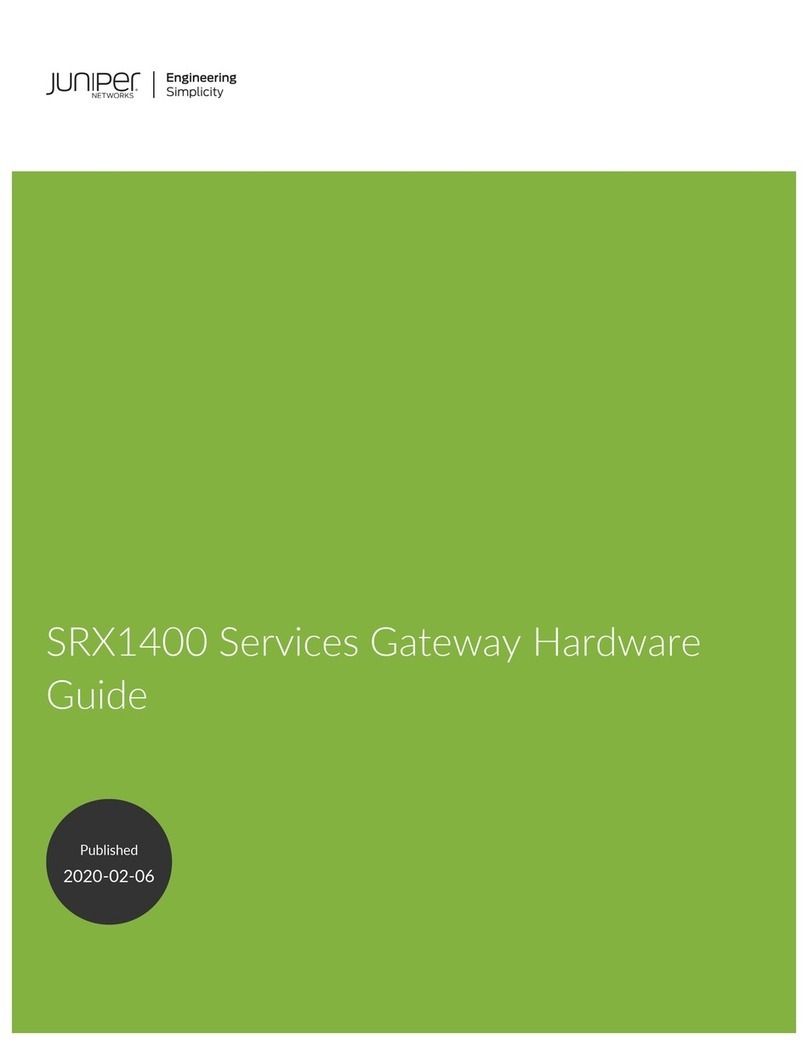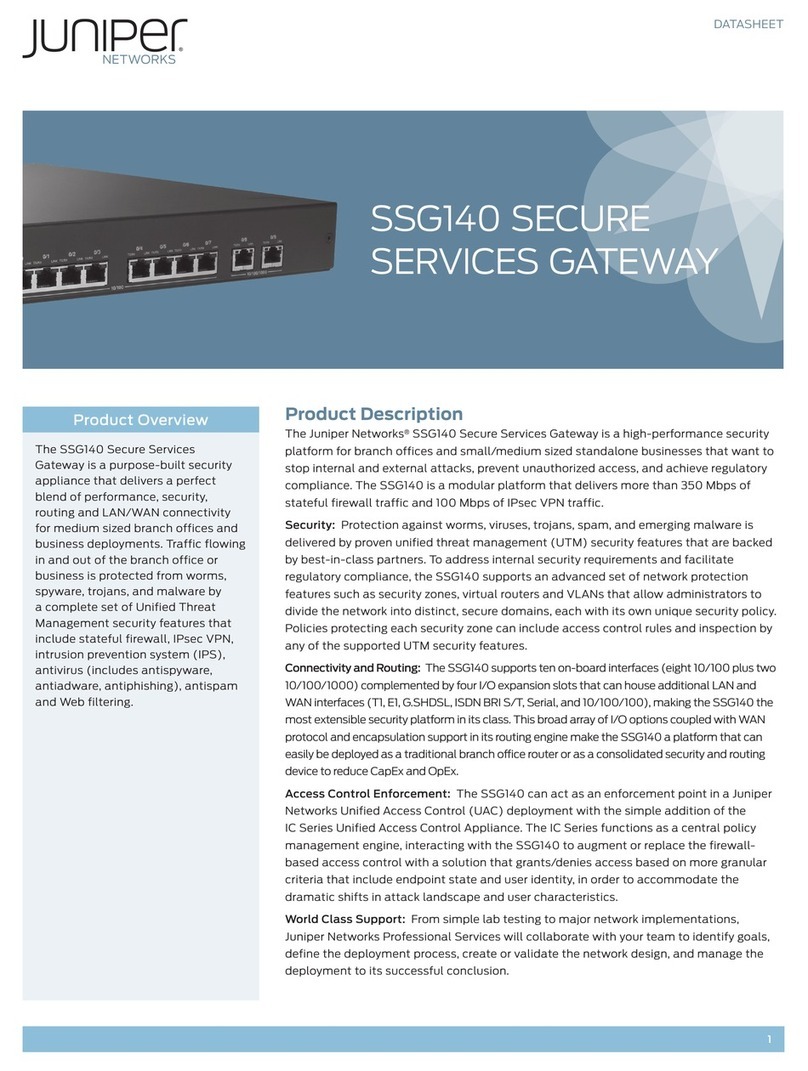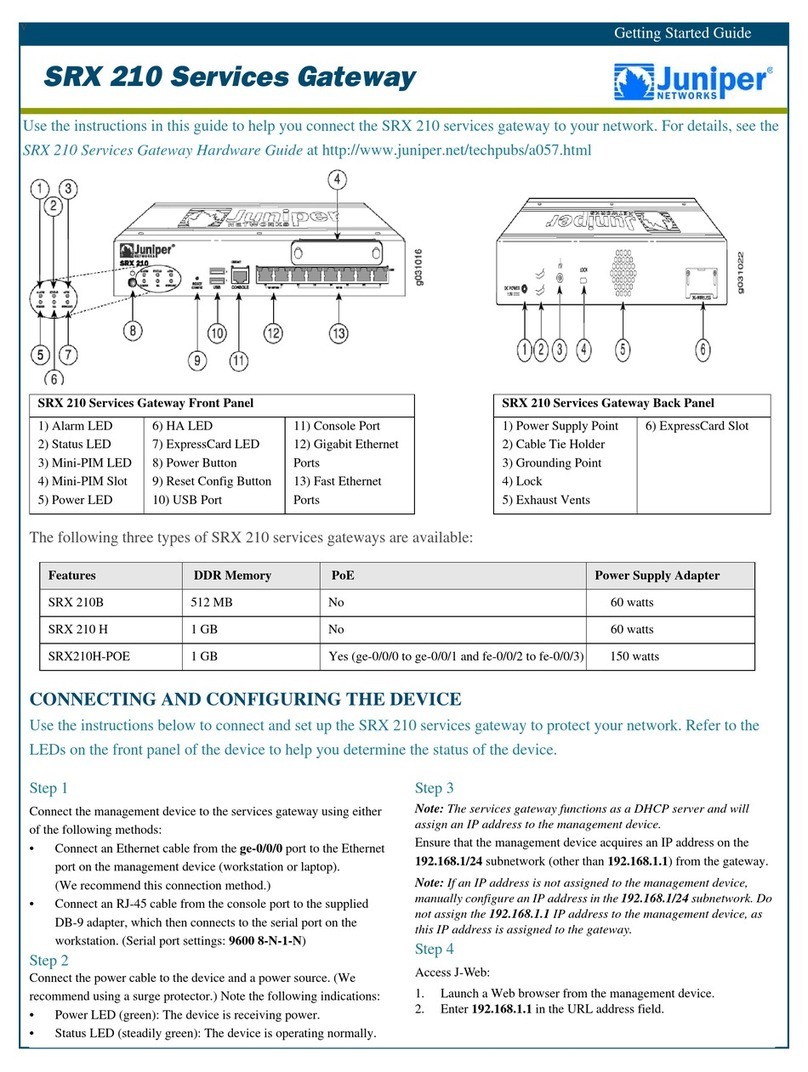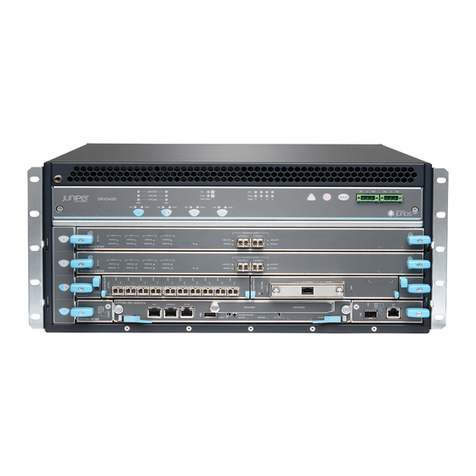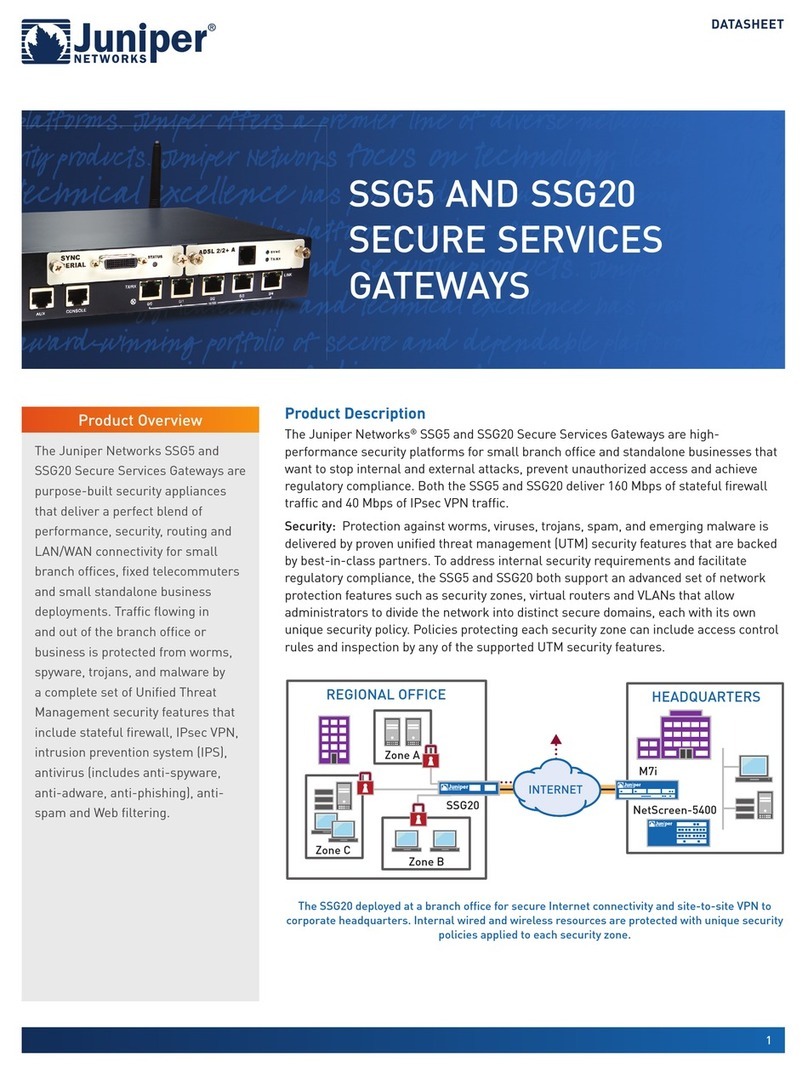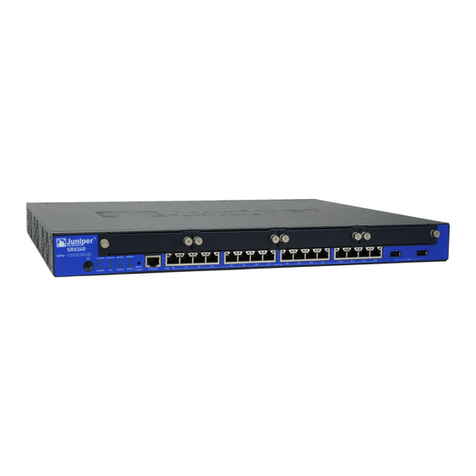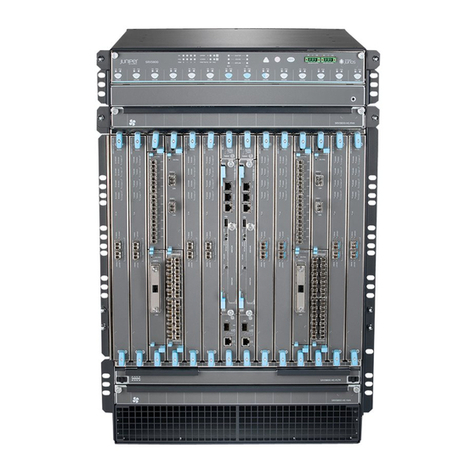
3
Options
Optional modules that can be added include one additional
(redundant) power supply (AC or DC2) and one IOC for additional
Ethernet connectivity. The SRX3000 line and SRX1400 use the
same interchangeable IOC modules. The SRX1400 is designed
for future expansion, including the ability to accommodate next-
generation silicon from Juniper Networks.
SRX1400 NSPC1
Providing the power inside the SRX1400, the integrated NSPC is
optimized to perform all packet processing and inspection for all
available services on the platform. The Juniper Dynamic Services
Architecture manages the multiple cores of processing power on
the NSPC as one pool or reservoir of resources, and dynamically
allocates resources to services as needed. To ensure maximum
processing performance and flexibility, the SRX Series high-end
products uses network processors (NPCs) to distribute inbound
and outbound traffic to SPCs and IOCs, apply QoS, and enforce
protection from DoS/DDoS attack scenarios.
SRX3000 Line NPC and SPC
The SRX1400 will interoperate with the SRX3000 NPC and SPC
cards. In order to use the SRX3000 line NPC and SRX3000 SPC in
the SRX1400, it is necessary to use the optional double wide tray.
I/O Cards (IOC)
Supporting a wide variety of use cases and to accommodate
interfacing between different Ethernet standards, the SRX1400
provides for additional front panel I/O to complement the
excellent port density provided in the base system. SRX1400 and
SRX3000 line of products use the same IOCs interchangeably.
Each SRX1400 Services Gateway can accommodate one
additional IOC; either 16 gigabit interfaces (16 x 10/100/1000
copper GbE or 16 x 1000BASE-X fiber GbE), or two 10GbE
interfaces (2 x 10GbE XFP Ethernet).
Power Supplies
The SRX1400 accommodates one or two AC or DC2 power
supply modules. Each individual power supply is fully capable of
furnishing all of the power the SRX1400 needs. The second power
supply is redundant to the first and is used to increase availability
in the event of a power supply failure. Power supplies are hot-
swappable, Network Equipment Building System (NEBS-III) ready,
and accessible from the front panel.
Features and Benefits
Loaded with features and optimized for 10GbE networks, the
SRX1400 has many attributes that make it superior to other
products on the market:
Table 1: SRX1400 Features and Benefits
FEATURE DESCRIPTION BENEFIT
Professional-grade networking
security services
• Purpose-built platform for security built from the
ground up to provide many years of professional-
grade, high-performance, high-availability
networking security services.
• Network security solutions you can trust because
they work as expected, day in and day out, year
aer year.
• One Junos OS release to manage across entire
network (routing, switching, security) and proven
over time in the most demanding environments.
• Single source that takes full responsibility for
networking security equipment, service and support.
• Powerful command-line interface (CLI) and
extensive scripting capability.
• Radically simplifies and reduces total cost of
ownership of large scale deployments, particularly
Long Term Evolution (LTE).
Consolidated security services Consolidation of multiple security services into one
chassis-based system (IP, GTP, and application
firewall; IP and GTP IPS; NAT; IP and application QoS;
dynamic routing; application identification, tracking
and reporting; and more.
• Deploy fewer unique devices.
• Reduce latency, performance, and availability
impacts from multiple devices.
• Reduce operation and maintenance (O&M)
costs with single, integrated policy and device
management system, common spares, and
technical training.
Dynamic Services Architecture • Separate control and data plane.
• Discrete routing engine.
• Multiple CPU cores form a pool of resources where
idle and under used processing resources are
dynamically allocated to the security services that
need them.
• Superior performance under varying trac loads,
especially DoS and DDoS attacks.
• Significant reduction in TCO.
• Significant improvement in network reliability,
availability, and performance.
• Improvement in customer satisfaction and time to
market.
